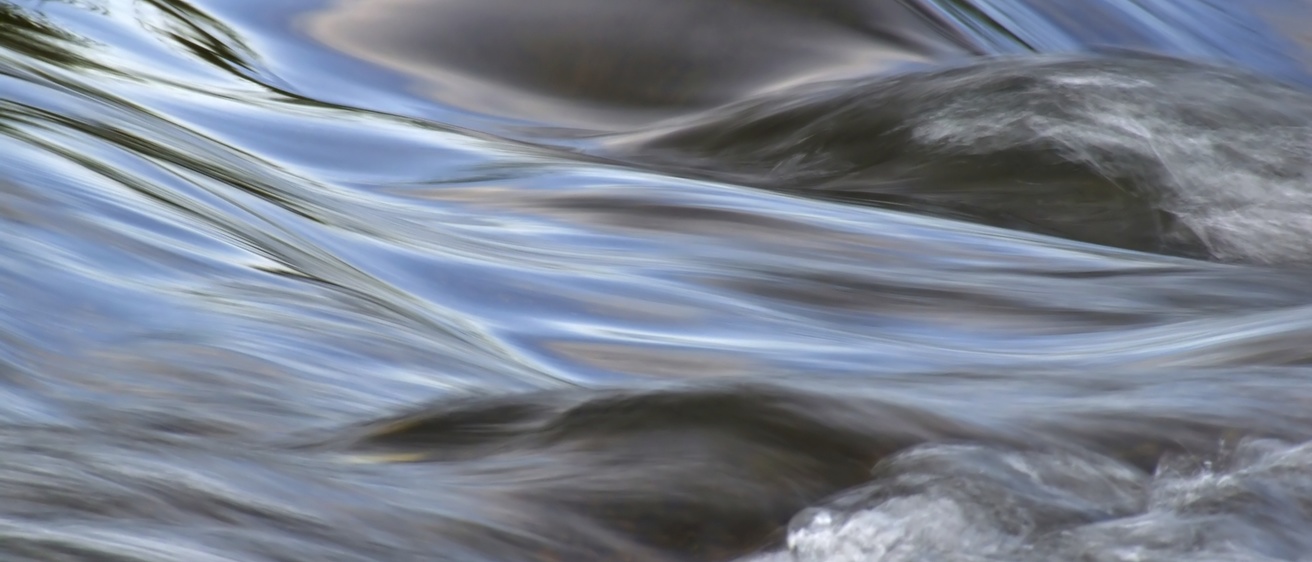There is more in that glass of water you just drank than meets the eye. Caffeine, perfumes, ibuprofen, and hormones are just a few of the pollutants that are not regulated and for which wastewater plants do not commonly treat. Known as “emerging contaminates,” these pollutants are accepted largely because there is no clear way to remove them. And so we all drink them regularly.
What if we could apply some of industry’s efficient methods for removing unwanted chemicals to what we know about cleaning up waterways? An Obermann Interdisciplinary Research Grant team met this summer to consider this question. Adam Ward, assistant professor of Geoscience at The University of Iowa, and Rachel Getman, assistant professor of Chemical and Biomolecular Engineering at Clemson University, combined their interests and expertise – his in healthy waterways and hers in catalysts – in hopes of alleviating one of the most serious water pollution problems both in Iowa and globally.

As a chemical engineer, Getman is accustomed to designing catalysts for industrial settings. These are substances that influence the rates of chemical reactions without breaking down themselves. Working with Ward, who is an expert in the transport and fate of pollutants in the environment, gives her an opportunity to turn her skills to a much more complex setting – the natural environment. (To the left is a model she created of a red and blue nitrate molecule absorbed by a gold-colored catalyst.)
“One of the biggest challenges in understanding catalysts and how they work is that, in addition to the target molecules, catalysts interact with all other compounds they touch,” explains Getman. Designing catalysts for simple, controlled systems is already quite challenging but designing catalysts for the natural environment is further complicated by the many additional chemicals that exists there.
Although the Interdisciplinary Research Grant traditionally brings scholars together for a month at the Obermann Center, Ward and Getman built in laboratory time so that they could test ideas that had come up in conversation, providing them with much needed preliminary data on which to base proposals. After Getman generated possible catalysts on the computer, Ward took them back to his lab to test their performance with water from the Iowa River, local wastewater plants, and other variables. This is a process they’ll continue this fall as they work toward several funding applications.
As part of The University of Iowa’s Water Sustainability Initiative cluster hire, Ward is hopeful that this project will extend not only his own areas of expertise but also further the work of the Initiative. “Water remediation with catalysts is a very open field,” he says. “There are few people doing this, so it presents a new research direction for both of us and some very exciting potential.”
Ward and Getman also note that that the Interdisciplinary Research Grant provided a unique opportunity for them as young researchers with growing labs and nascent faculty responsibilities. “My office is inside my lab,” says Ward, “and the door is always open. It’s a great atmosphere for discovery but not ideal for collaborating with a colleague. In just four days of having uninterrupted, face to face time with Rachel at Obermann, however, we were able to realistically map out what we could both do, and to write a pre-proposal for a grant.”
By the end of their time together, they identified two others partners for their project—David Cwiertny and Craig Just of The University of Iowa’s Civil and Environmental Engineering department (and both Water Sustainability Initiative cluster hires themselves), wrote a pre-proposal to the Water Environment Research Foundation, and mapped out a National Science Foundation application due this winter. If funded, the project could be exciting not only for the science involved but also but for its potential to reverse such a large, widespread environmental problem.
